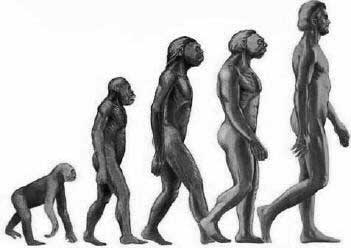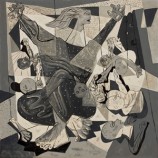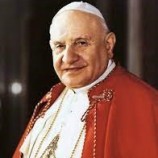It has been almost two centuries now that the church has reflected on the evolution of species. Since 1860, we have seen the Regency’s reaction to the publication of the book “The Origin of Species”: Our first parents were created immediately by God. Therefore we declare entirely against the Sacred Scriptures and the Faith the opinion of those who are unashamed to claim that man is fruit of a spontaneous transformation of an imperfect nature into ever more perfect ones, until reaching present human nature. (Cf. La Documentation Catholique, 17/11/1996).
The journalist Claire Lesegretain, of the newspaper “La Croix” comments that the first reception of the Darwin theories among Catholics was a negative one. Their reaction was overly defensive… In 1909, amidst full-bloom modernist crisis, the Pontifical Biblical Commission positioned “the special creation of man and the formation of the first woman from the first man” among the facts connected to the “foundation of the Christian religion.” The same Commission would affirm in 1930: “In the Transformist hypothesis, women’s condition would be far better than man’s, while she would have been originated from Adam, he would descend from an animal.”
Favorable voices
There were, however, several catholic circles which sympathetically welcomed the theories of Charles Darwin from the beginning. The Jesuit Ignace Carbonelle, presently in 1869 was underlining “the great value of the arguments” on which the theories of Darwin were supported, which, according to him, “held no antireligious orientation and probably will not have any disentanglement in regards to the dogma.”
In parallel, the Dominican Dalmace Leroy writes in 1887 “I think that the theory of evolution will run the same course as that of Galileu: after having caused great alarm, initially, the truth will come to light”. It was this uncomfortable sentence that would lead its author to be summoned to Rome…
However, it was greatly due to the influence of Teilhard de Chardin, Jesuit, and simultaneously a paleontologist, geologist and philosopher, that the remaining ecclesial rearguard would eventually lower in the second half of the 20th century. Although denounced before the Roman Curia, his teachings on evolution would eventually rise to the surface once again. In August 1950, in the Encyclical Humani Generis, the Pope Pio XII would authorize discussion on “the origin of the human body coming from living matter which existed previously.”
Time to Look Back
Obviously, if Darwin were alive today and aware of today’s “news” about genetics and its inquiries on the human genome, he would make some considerable finishing touches to his theories. In October of 1996, before the Pontific Academy of Sciences, John Paul II declared that “new discoveries lead us to recognize the theory of evolution as more than mere hypothesis,” albeit with exceptions against “the theories of evolution which, in function to the philosophers which inspire them, consider the Spirit as emergent from the forces of live matter or as a simple epiphenomenon of this matter.”
In September of 2008, Gianfranco Ravasi, President of the Pontific Counsel for Culture, while announcing a congress about evolution, taken place in Rome, observed: “There is not, a priori, any incompatibility between the theories of Charles Darwin and the Bible; Darwin was never condemned and “The Origin of Species” [the book] does not appear in the Index”.
The Footprints of the Creator
Meanwhile nothing prevents the church, whose inner workings has shown itself to be critical towards an excessively ideologized conception of the Darwin principles, from turning them into a kind of materialistic vision of the universe capable of leaving its marks on the entire world’s economic and social life.
The Christian faith in a God Creator is not limited to the biblical tradition as its source and justification. Contemplation alone of the infinitely grand (the macroscopic Cosmos with it nebulas, galaxies and the distances in light years) and of the infinitely small (like the nanoparticles and the mysteries of virus mutants) leads men to behold the footprints of the Creator.
Man is faced, at the same time, with the limits of the human knowledge and with the necessity of recognizing a Particular Intelligence that called everything into existence, being at the same time both its source and apex.
Related Articles
















